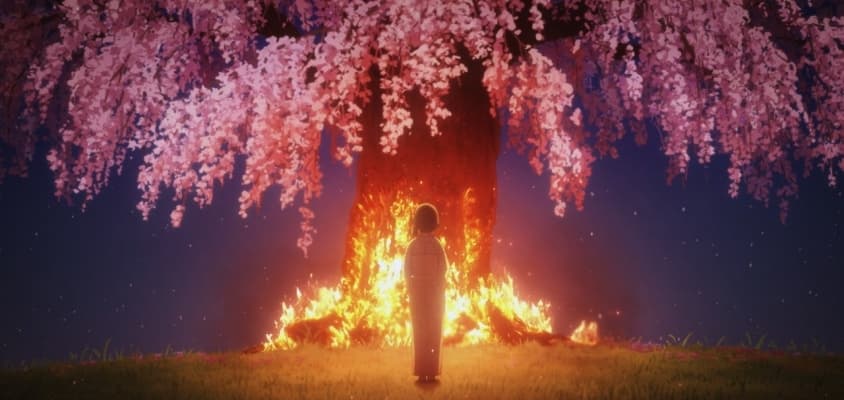
Image: Akumi Agitogi, Tsukiho Tsukioka/KADOKAWA/My Happy Marriage Partners
Mb | Jul 5, 2023 | Reading Time: 3 Min.
The story begins with a unique narrative approach: The main character, Miyo, recites a reflective poem that encapsulates the essence of her life. This device provides a fascinating glimpse into her emotions, the struggles she has endured, and the fleeting moments of joy in her life.
Our introduction to Miyo’s daily life reveals a troubled existence. Her younger half-sister, born from her father’s second marriage, treats her with contempt. The coldness of her stepmother further complicates their relationship—a situation reminiscent of the classic Cinderella fairy tale, albeit with a distinctly Japanese twist.
Miyo’s only solace is Kouji, a childhood friend who regularly visits her at home. His genuine warmth contrasts with her difficult home life, but this comfort soon gives way to disappointment. Kouji, whom Miyo secretly harbored feelings for, is set to marry her younger sister—a revelation that leaves both Miyo and Kouji heartbroken.
Their relationship begins to crumble under the weight of this impending marriage. This shift is beautifully portrayed through subtle changes in colors and the distance between the two characters. As their bond frays, the once-close companions grow emotionally distant.
Amid this heartbreak, Miyo learns that she, too, is to be married. However, her fiancé is a complete stranger, leaving her with a mix of fear and hope for an escape from her current life. As she embarks on the journey to meet her betrothed, a montage of her past experiences underscores this life-changing moment.
Despite her unease, the story ends on a hopeful note. When Miyo meets her new fiancé, Kiyoka, she sees a blooming cherry blossom tree—a symbol of the joy in her life. This beautiful sight suggests that her new life may not be as bleak as she had feared.
Our introduction to Miyo’s daily life reveals a troubled existence. Her younger half-sister, born from her father’s second marriage, treats her with contempt. The coldness of her stepmother further complicates their relationship—a situation reminiscent of the classic Cinderella fairy tale, albeit with a distinctly Japanese twist.
Miyo’s only solace is Kouji, a childhood friend who regularly visits her at home. His genuine warmth contrasts with her difficult home life, but this comfort soon gives way to disappointment. Kouji, whom Miyo secretly harbored feelings for, is set to marry her younger sister—a revelation that leaves both Miyo and Kouji heartbroken.
Their relationship begins to crumble under the weight of this impending marriage. This shift is beautifully portrayed through subtle changes in colors and the distance between the two characters. As their bond frays, the once-close companions grow emotionally distant.
Amid this heartbreak, Miyo learns that she, too, is to be married. However, her fiancé is a complete stranger, leaving her with a mix of fear and hope for an escape from her current life. As she embarks on the journey to meet her betrothed, a montage of her past experiences underscores this life-changing moment.
Despite her unease, the story ends on a hopeful note. When Miyo meets her new fiancé, Kiyoka, she sees a blooming cherry blossom tree—a symbol of the joy in her life. This beautiful sight suggests that her new life may not be as bleak as she had feared.
This article was originally published in German. It was translated with technical support and editorially reviewed before publication.
Comment(s)
